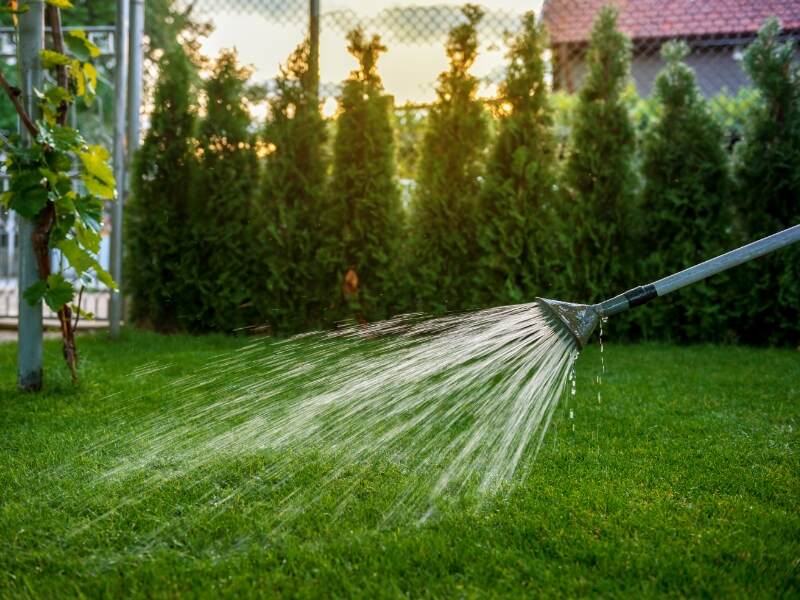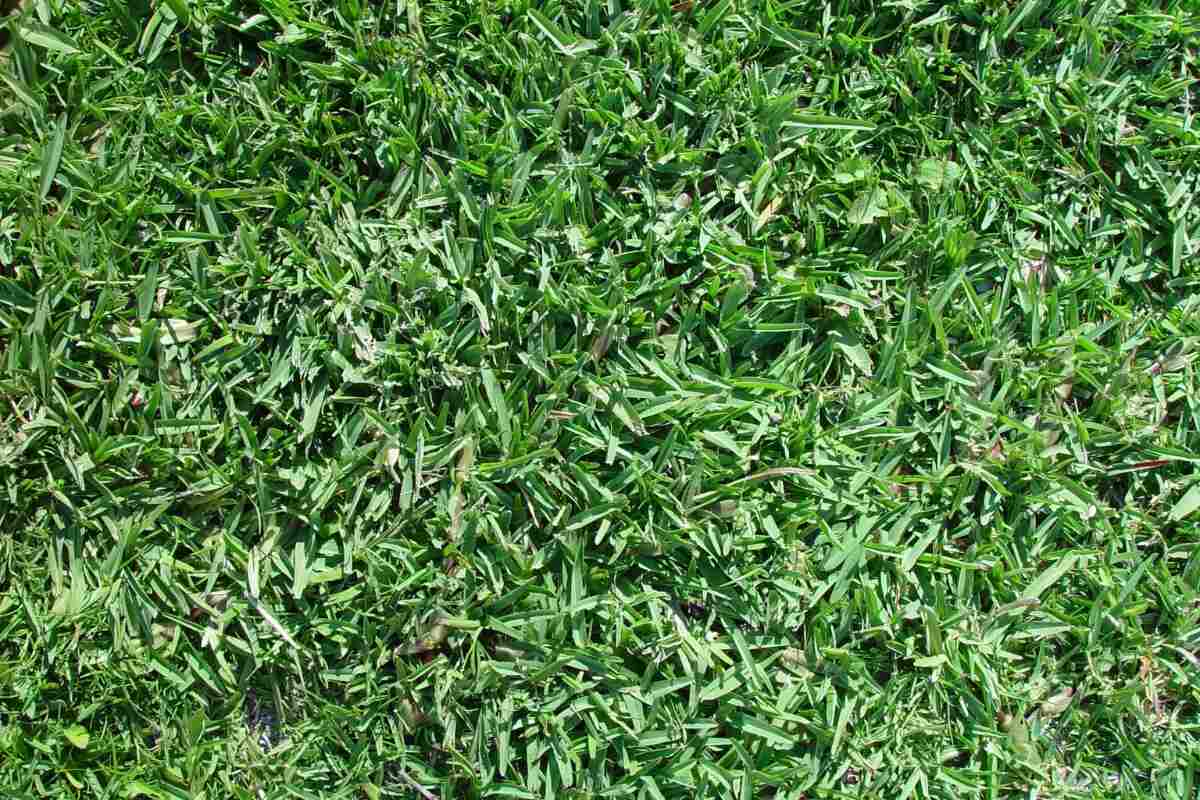
Whether you’re looking for a low-maintenance lawn or trying to incorporate native species into your landscape, you should put buffalograss on your shortlist. You don’t need to be situated on the plains of Wyoming or Colorado with bison roaming through your neighborhood for it to grow successfully. With the information in this guide to growing buffalograss, you can successfully grow it as lawn grass in Florida, Texas, Idaho, or Michigan.
Buffalograss At A Glance
- Classification: Warm-season grass
- Spreads by: Stolons
- Soil type: Well-draining native soils, except sand
- Soil pH: 6.5-7.5
- Mowing height: 2-4 inches
- Shade tolerance: Very low
- Drought resistance: High
- Foot traffic tolerance: Low to Moderate, depending on the cultivar
- Maintenance needs: Low
- Potential for disease: Low
- Insect pest resistance: High
Other notes: Not a good choice for saline or sandy soils
The Basics of Buffalograss
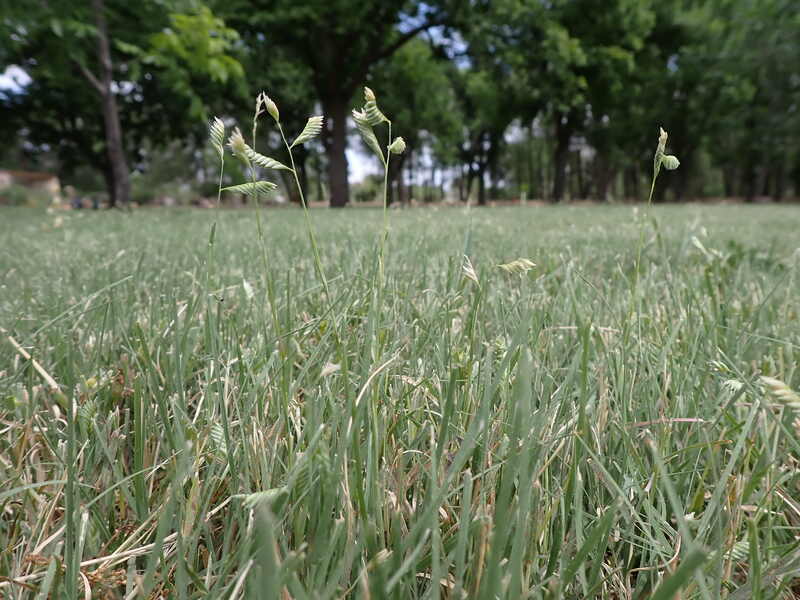
One unique thing about buffalograss is that it is the only native North American grass that forms a sod suitable for use as a home lawn. It is a top choice if you’re looking for a low-maintenance, sustainable, yet gorgeous yard.
Native to the North American prairies, buffalograss (Bouteloua dactyloides syn. Buchloe dactyloides) supported the great buffalo herds that roamed the plains and provided sod to early settlers to build homes. For the last 100 years, buffalograss has also been grown as a forage crop.
It thrives in the Great Plains regions called the shortgrass and mixed-grass prairies, where the climate is drier and grasses grow shorter.
American breeders have worked to expand the native warm-season perennial grass’s reach and developed turf-type cultivars that grow well in home lawns. It has amazing heat and drought tolerance, needs very little supplemental nutrition, and has good pest resistance and disease tolerance.
Buffalograss is exceptional, too, in that it grows well across most of the United States, which is rare for a turfgrass to handle all climates. However, it doesn’t mean it stays green all year, regardless of where you live. Buffalo will potentially go dormant when it’s too hot in the summer and when it gets cold in the winter.
That being said, it doesn’t particularly like to hang out in sandy soils, and it doesn’t hold up to heavy foot traffic as well as some other turfs.
If you have kids who play in the yard constantly or pets that frequently frolic across the lawn, you may want to pass on buffalograss or look for a specific cultivar bred for better foot traffic tolerance.
Cultivars That Produce a Good Quality Lawn
You have two types of Buffalograss to choose from when growing turf: seeded and cloned.
Seeded types are a mix of female and male plants and are used for general utility turfs. Seeded cultivars produce male pollen and seed heads, so they need more frequent mowing to keep them looking nice. Seeded cultivars include:
- ‘Bison’
- ‘Bowie’
- ‘Cody’
- ‘Plains’
- ‘Tatanka’
- ‘Top Gun’
- ‘UC Verde’
Cloned varieties (vegetative types) have only female plants, so they don’t produce seed heads but are only available in sod or plugs. Cloned cultivars include:
- ‘609’
- ‘Legacy’
- ‘Prairie’
- ‘Prestige’
- Turffalo
Pros And Cons Of Growing A Buffalograss Lawn
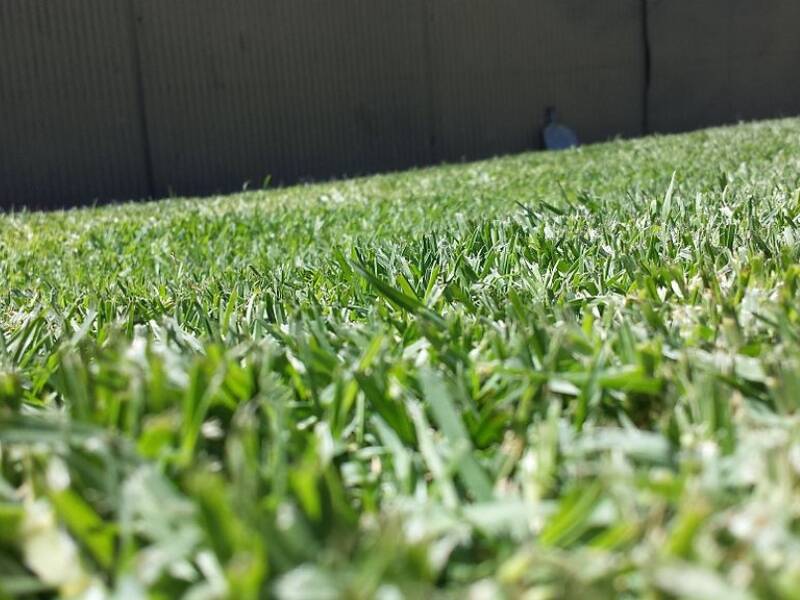
Although buffalo is a native Plains grass—which is considered a huge plus for local homeowners—it comes with advantages and challenges when grown as turfgrass for home lawns.
Pros
✓ Fine-textured blades create a soft grass
✓ Incredibly drought tolerant
✓ Low fertilizer needs once established
✓ Good cold tolerance
✓ Extremely low maintenance
✓ Can be started via seeds, sod, or plugs
Cons
✗ Seeds are expensive
✗ Needs a lot of water to establish
✗ Open growth habit allows for significant weeds
✗ Not all cultivars hold up to foot traffic
✗ Not fire-safe
How Do You Establish Buffalograss?
Although buffalograss lawns are one of the lowest maintenance turfs once established, they require substantial work upfront. Unfortunately, there is nothing low-maintenance about establishing a buffalograss lawn. This is ironic, considering it grows wild across most of the country without assistance or care.
When starting a new buffalograss lawn, you have the option of sowing seeds, laying sod, or planting plugs—each method has its own advantages and drawbacks.
- Planting seeds is cheaper than sod, but it takes longer to get an established lawn.
- Laying sod gives you a ready-made yard, but installation is labor-intensive and expensive.
- Grass plugs lie somewhere between the two. They still take a while to fill in and cover the bare soil, but less time than seed. And they come with a medium price point.
In all three situations, you’ll need to thoroughly prepare the seedbed by removing all debris, killing all weeds, leveling the ground, and slightly compacting the soil. You will then need to keep the soil and root zone consistently moist until the grass establishes and apply a high-quality turf fertilizer about six weeks after planting or laying sod.
The Cost Of Starting Buffalograss
Buffalograss seed: Buffalograss seed is difficult to harvest, which drives the seed cost up, making it more expensive than other turfgrasses. On sale, it can easily cost $50 for a 1-pound bag.
- Grass Seed Options:
– Everwilde Farms Buffalograss Seeds (1 lb. of seeds)
– Buffalograss seed (primed) (5-lb. bag)
Buffalograss sod: Costs about $1.00 per square foot.
Buffalograss plugs: Costs about $1 per plug; 6 dozen plugs cost about $70.
When To Start Your Buffalograss
Buffalograss seed: If you opt to seed your yard, it’s best to plant in late spring like you would with other warm-season grasses such as Bermudagrass. These grasses grow best when temperatures are between 75 and 90°F, so your seeds germinate just before growth takes off. This timing allows the seed to grow prolifically through the entire growing season and put down a robust root system before winter dormancy.
Buffalograss sod or plugs: If you choose to go with either sod or plugs, you have quite a bit more flexibility regarding time. Sod can be laid and plugs planted whenever you have ample time to tackle the project. However! You significantly increase your success if you plan this venture when temps are more moderate in the spring or fall.
How to Care For An Established Buffalograss Lawn
Once your buffalograss lawn is established, the hard part is over. Maintaining buffalograss takes significantly less time, effort, and resources than many other turfgrasses.
Watering Your Buffalograss
You only need to water buffalograss enough to maintain growth and keep it from going dormant if you want to keep it green during the summer. On average, it needs one-half or one-third of the water required by other common turfgrasses.
Overwatering promotes weed growth and can increase disease and insect problems. So it would be best if you erred on the underwatering. The best thing is to watch for signs of wilting, the grass going to seed, or if the blades start thinning out, and then give it a good drink.
If you rely on a sprinkler system to water your grass, run it early in the morning for the best water use efficiency. Aim to have the watering done by 10 a.m.; after this time, you’ll begin losing water to evaporation before it enters the soil.
During periods of extended drought, you can choose not to water your grass. It will lose its green color as it goes dormant but will survive and perk back up when moisture levels improve.
When and How To Fertilize
Plan to give your buffalograss 1-2 pounds of nitrogen (N) per 1,000 square feet every year. Look for a fertilizer with at least one-third of its N content formulated as a slow-release and an N-P-K ratio of 3-1-2 or 4-1-2 for the best results.
You’ll want to apply half of the yearly recommendation (0.5-1 lb) in late June and the other half in early August. Most turfgrasses like three doses of fertilizer a year, but in this case, less is more.
Remember, though, exact fertilizer rates depend on your soil type, how much organic matter is in your soil, and your chosen buffalograss cultivar. To ensure you’re feeding your grass correctly, I recommend running a soil test at least every two or three years.
Need help picking fertilizer? Check out our guide on How to Choose the Right Lawn Fertilizer.
Mowing Recommendations
How often you mow your buffalograss lawn is the biggest factor in whether your lawn is hands-off or not. You have a few options based on your personal preference:
- You can mow weekly, keeping your grass 2-3 inches tall.
- You can mow every three to four weeks, cutting it 3-4 inches tall.
- You can leave it unmowed, except for an annual spring cutting at 3-4 inches high to remove the old growth.
Note: Check out our article containing the best mowing tips if you need to brush up on your grass-cutting skills.
Dethatching and Aeration
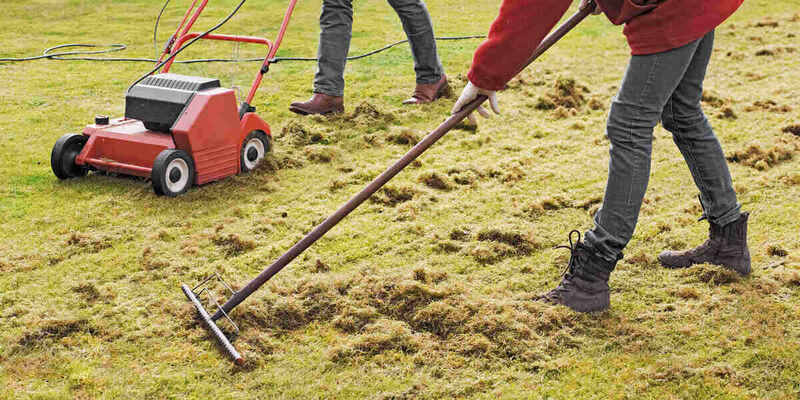
This maintenance aspect is the one spot where buffalograss isn’t carefree and maintenance-free. Unlike easy-going grasses like Bahiagrass, tall fescue, and perennial ryegrass, you must dethatch and aerate buffalograss regularly to keep it growing well.
Once you see the thatch layer is getting close to an inch thick, it’s time to dethatch the lawn to improve air and water movement into the soil. How often this happens will depend on your mowing routine, fertilizer regime, etc. It could be yearly or stretch to every 2-3 years.
Beyond dethatching, you should also core aerate every year or two to mitigate soil compaction. When you core aerate, a machine pulls soil cores from the ground, breaking up soil compaction and letting air and water move into the topsoil easily.
Both lawn care practices should be done in late spring or early summer, just before summer temperatures hit and grass growth goes wild. This timing allows the grass to recover before going dormant in the fall.
Weed Management
While buffalograss is loved by many homeowners nationwide, it’s only fair to warn you of its one major “con.” Like other native plants, such as blue grama grass, buffalograss is categorized as having an open growth habit, which means the grass doesn’t grow thickly.
Because of this, you will constantly battle weeds as they love to come in and put down roots into bare soil.
To keep them at bay, you must implement a regular weed control program that incorporates pre- and post-emergent herbicides.
Insect and Disease Management
As a native grass, buffalograss has few insect and disease problems, but it isn’t completely immune. Especially if you are overwatering and overfertilizing your lawn.
Common insects include:
- Buffalograss webworms
- Mealybugs
- Mites
- Short-tailed crickets
- Buffalograss chinch bugs
Although disease pressure is generally low, buffalograss can be susceptible to bipolaris leaf spot.
To prevent unexpected issues from becoming big problems, regularly scout your lawn and quickly begin treatment when you spot signs of pests or diseases, such as abnormal browning or thinning.
FAQ About Buffalograss
Buffalograss does best when it receives 6 to 8 hours of direct sunlight daily. It will grow in partial shade, but it is important that it gets early morning sun and a minimum of six hours of sunlight. It’s also critical to remember that it doesn’t prefer full sun either.
Buffalograss seeds take about two to three weeks to germinate. After germination, you can expect it to take upwards of a year (or a full growing season) to fill in the seedbed completely. Plugs take about two to three months to fill in and create a nice carpet of grass.
Your lawn will benefit from periodically overseeding buffalograss, especially if you see thin spots or bare patches. Overseeding in the late spring is best, but if you overseed in the fall, sow seed at least 60 days ahead of the first expected fall frost.
Call a Lawn Care Pro Today
If you think a low-maintenance, native grass lawn of buffalograss may be a good choice for your home, contact a local lawn care professional through LawnStarter today. They can help you install and care for your grass, freeing up your time to spend doing the things you love.
Main Photo Credit: Titus Tscharntke / Pixnio / License
LawnStarter participates in the Amazon Services LLC Associates Program, an affiliate advertising program. LawnStarter may earn revenue from products promoted in this article.
